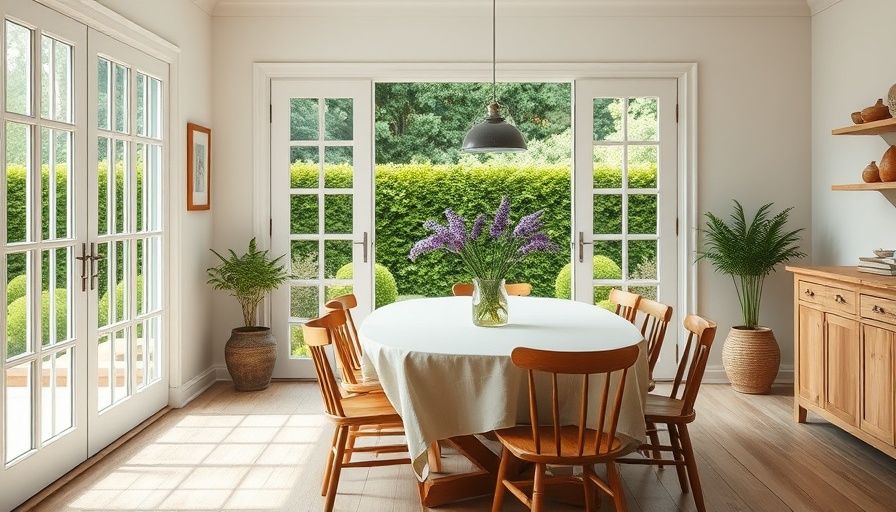
How an Arles Farmhouse Became a Beacon for Sustainability
The charming farmhouse known as Mas Baudran, nestled in Arles, France, has been transformed from a traditional residence into a progressive artist residency with sustainability at its core. The design team, Pareil, led by Caroline Weill and Letitia Paradis, was commissioned to enhance the existing structure while focusing on environmentally friendly practices. This initiative highlights a growing trend in architecture that emphasizes preservation and modernity without compromising ecological responsibility.
Understanding the Context of Mas Baudran's Renovation
Originally built in the 16th century, Mas Baudran reflects the agricultural heritage of the Camargue region. Its recent renovation not only adds modern living spaces but also preserves the historical essence of the building, showcasing the beautiful relationship between old and new. The alterations made by Pareil include enhancing thermal efficiency, which effectively reduces the reliance on traditional cooling systems that contribute to carbon emissions. Instead of air conditioning, the design harnesses natural cooling techniques, ensuring comfort while being kind to the environment.
The Role of the Artist Residency in Environmental Advocacy
It’s inspiring to see how the owners, Sébastien and Sofian, envision Mas Baudran as more than just a personal residence. With a desire to engage the public in discussions around environmental preservation and climate protection, they opened their doors to artists from various fields. This creative dialogue facilitates interdisciplinary exchanges among artists, lawyers, and scientists, crucial in today’s climate crisis. The residency includes dedicated spaces for artistic creation, workshops, and community engagement, demonstrating how a living space can evolve into a platform for social impact.
Innovative Techniques: Bridging the Past and Future
The renovation utilized innovative construction techniques while respecting the historic aspects of the farmhouse. Original stone walls were preserved, and materials like lime whitewash were used to maintain aesthetics while reducing environmental footprints. The thoughtful selection of materials exemplifies a significant shift in architectural practices—moving towards sustainability and resource conservation. These choices reflect not just a trend but a necessary evolution in how we build, live, and interact with our environments.
What Can We Learn About Sustainable Living?
Mas Baudran serves as a model for future renovations, showcasing how historical preservation can harmonize with modern sustainability. By learning from this project, homeowners and builders can consider their local ecologies and historical contexts when planning renovations. It highlights the importance of reducing carbon footprints in building practices, ensuring that future generations can appreciate the cultural and environmental legacies left behind.
Call to Action
If you're inspired by the vision of Mas Baudran and its commitment to sustainability, consider how you can incorporate eco-friendly practices in your own home renovation projects. Every small step towards sustainability helps in creating a more resilient environment for future generations.
 Add Row
Add Row  Add
Add 




Write A Comment